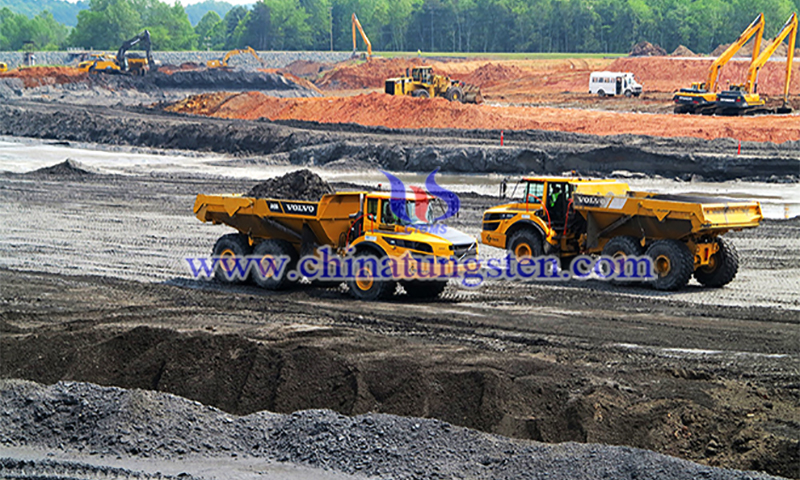DOE Looks to Coal Wastes to Increase US Rare Earth Supply
- Details
- Category: Tungsten's News
- Published on Thursday, 17 March 2022 21:09
The U.S. Department of Energy announced last month that it plans to provide $140 million to build and operate a plant to separate rare earth elements (REEs) from coal wastes as a way to increase the rare earth supply. However, the REE concentrations in these wastes are low and comparable to those in soil and rock, casting doubt on whether such an operation would be economically viable.

A series of stirred precipitators used by researchers at West Virginia University's National Center for Coal and Energy Research was recently able to extract rare earth elements from acid mine drainage. The research was sponsored by the Department of Energy's National Energy Technology Laboratory.
In a February 14 Request for Information (RFI), DOE sought public comment on the Bipartisan Infrastructure Act's provision requiring the construction of a "fully integrated rare earth element extraction and separation facility and refinery. The RFI may be followed by a solicitation to the industry to build the plant.
The industry will be expected to match the DOE's $140 million contributions, according to the RFI. The goal is to economically produce 1,000 tons per year of mixed rare oxides from coal waste, or about 10 percent of U.S. demand, starting in 2027-28. DOE expects production to expand to 10,000 tons by 2035, or about 10 percent of projected U.S. demand, and to 20,000 tons by 2040, or 20 percent of projected demand. The refinery could also produce unspecified other critical minerals, but targets are not set for them, and the RFI makes clear that REEs are the main objective.

Commercially valuable REEs include neodymium and praseodymium, which are used to make permanent magnets. Demand for these magnets is expected to surge with the development of electric vehicles (EVs) and wind turbines. Other rare earth elements, lanthanum, and cerium are used in petroleum refining catalysts, automotive catalytic converters, and phosphors, and as glass additives in flat panel displays, cell phone screens, and camera lenses.
A major source of coal waste is acid mine drainage, the acidic water that flows from mining waste. This water leaches out rare earth elements and other minerals, and studies have shown that almost all of the rare earth element content can be recovered in the remediation of the water.
However, a DOE spokesperson acknowledged that the REE concentrations in coal wastes are far below the tens of thousands of parts per million found in basalt and monazite ores mined in the U.S. and abroad, enhancing the rare earth supply from it is a far way to go. For example, basalt at Mountain Pass is one of the richest REE deposits in the world, with REE concentrations of 8-12%.
- Rare Earth Manufacturer & Supplier, Chinatungsten Online: www.chinatungsten.com
- Tungsten News & Prices of China Tungsten Industry Association: www.ctia.com.cn
- Molybdenum News & Price: news.molybdenum.com.cn
- Tel.: 86 592 5129696; Fax: 86 592 5129797; Email: sales@chinatungsten.com



 sales@chinatungsten.com
sales@chinatungsten.com